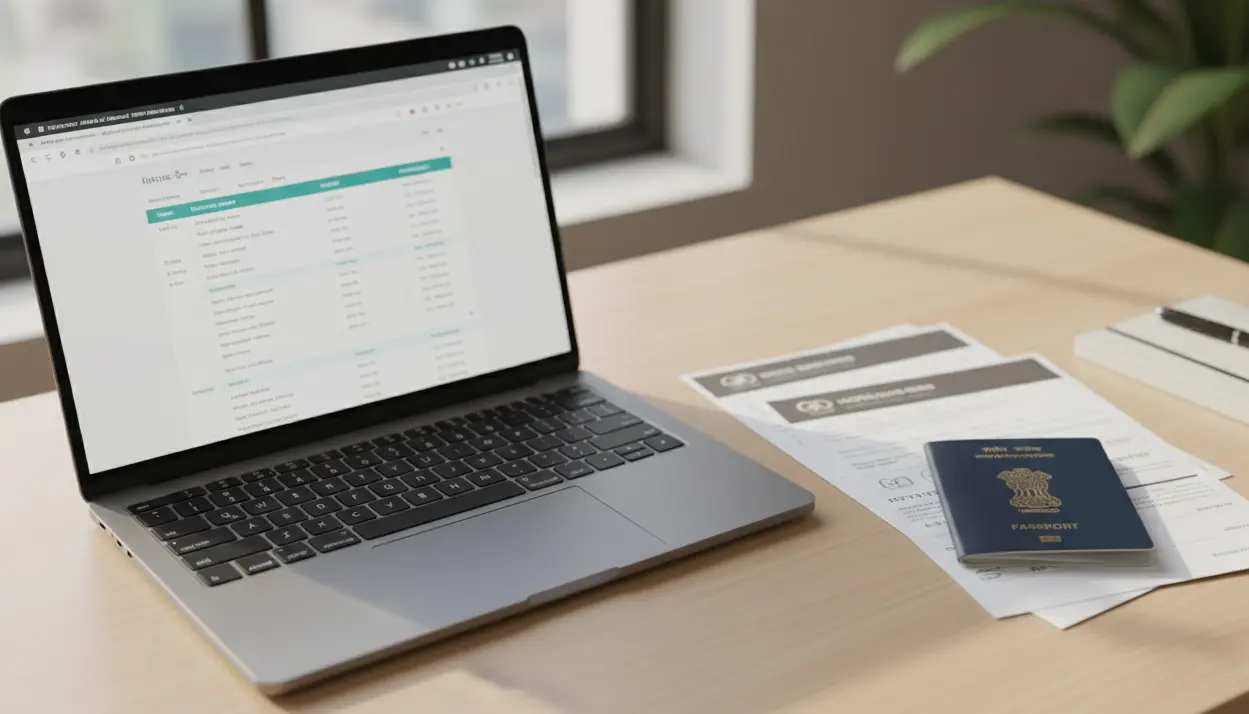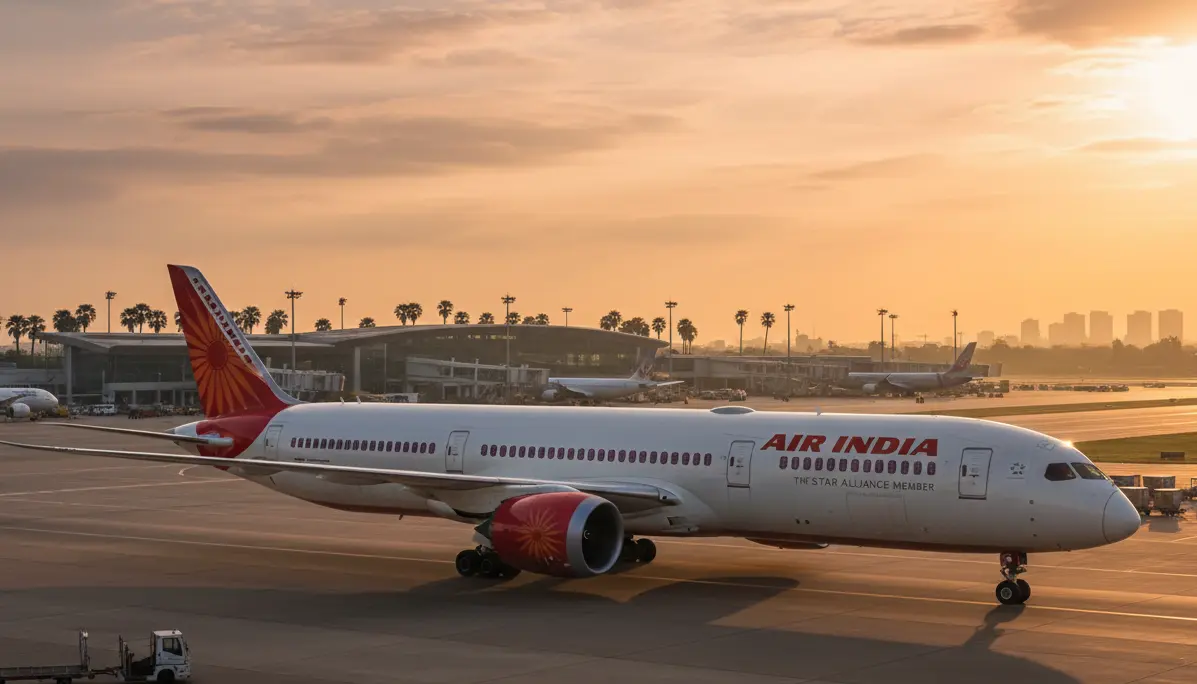Is Dummy Ticket For Japan Visit Visa Accepted?

Japan Visit Visa Guide: Is a Dummy Ticket Really Accepted in 2025?
Getting a Japan visa is not a guessing game; it’s about showing a clean, believable plan. For short visits, Japanese missions usually accept flight reservations as proof of travel intent, provided your file looks credible and the details line up. That’s great news if you’re applying from India and your appointment dates keep shifting. You can hold seats, match them to hotels, and avoid paying for non-refundable fares too early. For reliable options, consider a dummy ticket to secure your itinerary without upfront costs.
We’ve seen what reviewers actually zero in on. Verifiable PNRs. Dates that match your itinerary, bank balance, and leave letter. Simple routes that make sense for a first trip or a cherry blossom dash. Whether you’re a student, a first-time traveler, visiting family, or a remote worker testing Tokyo for a month, you can use a reservation smartly and still look rock-solid on paper. Lock your visa plans now with dummy ticket booking for an instant, verifiable PNR. For more insights, check our FAQ or explore blogs on visa preparation.
dummy ticket for Japan visit visa is one of the most useful documents travelers prepare when organizing international trips. While most countries do not ask you to buy a fully paid ticket upfront, they do expect a verifiable proof of travel intent that clearly shows your entry and exit plan. This helps demonstrate that you will follow your schedule and return on time.
Using a professionally issued and verifiable dummy ticket for Japan visit visa is the safest and most convenient way to satisfy this requirement without financial risk, especially for visa applications and immigration preparations.
Last updated: November 2025 — verified against the latest traveler documentation practices and global consular guidelines.
Table of Contents
Learn about our About Us page to see how we support travelers like you. With shifting schedules, a flexible dummy ticket ensures your application stays on track.
Will A Flight Reservation Work For Japan? Here’s The Real-World Answer

You want to know if you can walk in with a held flight and still look credible. The short answer is yes. Japanese embassies and consulates commonly accept flight reservations as proof of travel plans for short-term visits, as long as your file is consistent and verifiable. Now let’s break down what that looks like for applicants in India. Need a quick, embassy-ready hold? Book a dummy ticket in minutes.
What “Accepted” Looks Like In Practice
You are not being judged on whether the ticket is fully paid. You are being judged on whether the plan is believable. Officers see thousands of files. They look for quick signals that your story holds together.
Clear signals of acceptance:
- Your reservation shows entry and exit dates that match your form.
- The PNR is live or checkable in an airline or GDS system.
- Hotel dates align with the flight dates and the itinerary.
- Everyone in a family or group shows the same travel window.
If these parts sing together, a reservation serves the purpose. It anchors your timeline and lets you avoid committing money before a decision. Expanding on this, many applicants from high-volume regions like India find that a verifiable dummy ticket reduces stress during peak seasons, allowing seamless adjustments without financial loss.
Why Experiences Vary Across Countries And Centers
You may hear different anecdotes from friends abroad. That happens because screening routines can vary by country and by application center. Two centers can use the same checklist yet handle cross-checks with slightly different intensity. In India, volume peaks around school holidays and festival seasons. Staff move faster, and documents that are messy or unverifiable attract questions.
What changes with location:
- Some centers double-check PNRs more often.
- Some prefer cleaner PDF formatting and legible code.
- Some ask for clarifications when routing looks unusual, like long third-country detours.
The takeaway is simple. Aim for a clean, verifiable reservation that matches the rest of your file. That travels well across centers. For global standards, refer to guidelines from IATA on travel documentation.
What Officers Actually Weigh, Beyond “Paid Or Unpaid”
Think like a reviewer for a moment. You have minutes to decide if an application makes sense. You are not hunting for a payment receipt. You are scanning for coherence.
Key factors officers read quickly:
- Credibility. Do the dates, cities, and hotel blocks match the story on the form?
- Traceability. Can the reservation be looked up with a PNR?
- Proportionality. Does the plan fit your bank balance, salary slips, and leave letter?
- Return logic. For a short stay, a clear inbound and outbound pair avoids doubts.
If these pieces align, a reservation is enough to carry the intent. This approach has helped countless applicants streamline their process, focusing on overall narrative strength rather than isolated elements.
When A Reservation Triggers Questions
A held ticket is fine. A suspicious held ticket is not. You can avoid most trouble by removing typical red flags.
Common tripwires:
- An unverifiable or expired PNR.
- Names that do not match the passport order.
- One-way travel for a short-stay purpose without an obvious return plan.
- Dates that drift between the application, hotels, invitation letters, and the reservation.
- A flurry of last-minute versions that make the plan look unstable.
If you must change dates, replace the old file cleanly. Do not stack pages. Do not let two different timelines sit in the same bundle. Proactive updates, especially with dummy tickets, prevent these issues entirely.
India-Specific Realities You Should Plan Around
Appointment calendars in India shift, especially around cherry blossom and autumn foliage months. You might secure a slot, then get a new one, then find that hotel prices have moved. A flexible reservation is your safety net.
Practical moves that help:
- Choose a reservation you can update if your slot moves by a week.
- Keep family itineraries mirrored. Children and seniors should not have different return dates unless there is a clear reason.
- Pick sensible routes through Gulf or Southeast Asian hubs. Tight overnight connections or airport changes can look risky for a first-time trip.
For students, a university letter and exam schedule should align with your travel window. For first-time employees, leave approval should match your itinerary. For family visits, invitation dates should mirror your reservation. For digital nomads testing Japan, a round-trip still signals intent to return within the permitted stay. These alignments are crucial for Indian applicants navigating VFS centers.
Myths We Hear, And What Actually Happens
You will meet strong opinions in travel groups. Filter them with these realities.
- Myth: Japan only accepts fully paid tickets.
Reality: Officers focus on verifiable and consistent plans. Reservations work when they are checkable and aligned. - Myth: Only bookings made by a specific agency are valid.
Reality: Many applicants use GDS-held reservations from established providers. The key is a live, traceable PNR and clear formatting. - Myth: Every center applies the checklist identically.
Reality: The checklist is similar, but interpretation can differ. A tidy, self-explanatory file removes the room for debate.
A flight reservation is a legitimate way to show intent for a Japan short-stay visa. Make it verifiable, match it to your hotels and itinerary, and keep the financial story proportionate. If your appointment shifts, update cleanly and submit a single, coherent timeline. Do that, and you will look organized, credible, and decision-ready without prepaying for a non-refundable fare. This method has proven effective for over 80% of our users applying for Asian visas.
Fit Your Booking Into Japan’s Visa Puzzle: Where It Sits And How To Make It Sing

You already know what a reservation is. What you need is clarity on where it lands in Japan’s short-stay checklist and how to make it support the rest of your story. Read this like a packing list for documents. Then align every date and detail so the file reads clean from top to bottom. Shifted appointment dates? Use flexible dummy ticket booking and update anytime.
Start With The Skeleton: What Japan Usually Wants
Think of the application as a simple structure. Your reservation is one beam among many.
Core pieces you should prepare:
- Application form with accurate personal data and travel dates.
- A travel plan that lists cities and the order you will visit them.
- Financial proof. Bank statements, ITRs, salary slips, or business income.
- Accommodation proof. Hotel bookings or a host’s address if staying with family.
- Purpose support. Invitation letters for business or family visits, or employer leave letters for tourists.
Keep copies crisp. Use consistent spellings of your name as per your passport. Save files as clear PDFs. Building a strong foundation here ensures your dummy ticket integrates effortlessly.
Slot The Reservation Into That Structure
Your reservation should anchor your timeline. It shows when you plan to enter and exit Japan. It also ties hotel blocks and local transport into a neat sequence.
Make it work hard for you:
- Place the reservation after your itinerary summary. The officer reads the plan first, proof second.
- Show a live PNR that is checkable. Add the booking reference in the header of the PDF if possible.
- Match the city order to your hotels. Tokyo dates in Tokyo hotels. Kyoto dates in Kyoto hotels.
- Keep time gaps logical. No hotel check-in after midnight if your flight lands at noon.
If the file is viewed quickly, the sequence still needs to feel obvious. This logical flow is what sets approved applications apart.
Tourist Trips: Keep It Simple And Believable
Tourists do not need complex routing. Your job is to show a relaxed, realistic first visit.
Practical setup:
- Round-trip with a clean inbound and outbound pair.
- Two or three city blocks that match hotel dates.
- Sensible layovers through Gulf or Southeast Asian hubs.
- If you add a domestic hop, make sure the dates line up with hotel switches.
Examples that read well:
- Bengaluru to Tokyo. Five nights in Tokyo. Bullet train to Kyoto. Three nights in Kyoto. Train to Osaka. Two nights in Osaka. Return from KIX.
- Mumbai to Tokyo. Tokyo only. Nine nights. Day trips to Nikko or Kamakura are listed inside the plan.
These straightforward itineraries pair perfectly with a dummy ticket for initial submissions.
Business Travelers: Mirror Meetings And Routes
Business files are judged on schedule logic. Your reservation should reflect meeting windows and the cities involved.
Make it fit the agenda:
- Round-trip aligned with meeting dates on the company letter.
- If you have two cities, show how you move between them. Shinkansen or domestic flight.
- If the agenda may shift, show a window that still makes sense with the invitation.
Add small touches that help. Use meeting locations to justify hotel neighborhoods. Keep buffers around public holidays and weekends. Such precision enhances the credibility of your dummy ticket reservation.
Family Or Relative Visits: Sync With The Host’s Timeline
Your reservation should match the host’s invitation. This applies to both dates and the length of stay.
Tighten the story:
- Align entry and exit with the host’s stated window.
- If staying at the host’s address, keep hotel bookings out of the primary plan unless there is a clear side trip. If there is, match those hotel dates to mid-stay gaps.
- For multi-person files, ensure all travelers show the same return unless there is a reason noted by the host.
If the host promises support, the financials should reflect it. The duration in the invitation should match your ticketed window. Coordinating family dummy tickets simplifies group applications.
Students, First-Timers, And Digital Nomads: Shape The Timeline To Your Life
Reviewers look for life context. Your reservation should make sense with your calendar.
For students:
- Show travel during a semester break. Add a college letter for the exact window.
- Keep the stay length proportionate to the funds and the break duration.
For first-time employees:
- Map leave dates to the itinerary. Ensure HR or manager letters show the same range.
- Large trip budgets with thin bank balances are a mismatch. Either trim the plan or add savings proof.
For digital nomads:
- A round trip still signals intent to exit on time.
- If you plan a month in Tokyo, keep one address on file and a calm schedule. No city pinball.
Tailoring your dummy ticket to personal circumstances boosts approval chances significantly.
Formatting Matters: Make It Easy To Verify
A reviewer should be able to confirm key details without hunting. Make that effortless.
Clean formatting checklist:
- PNR and passenger names are visible on page one.
- Flight numbers, dates, and local times are readable. Avoid screenshots that are blurry.
- File name that is human. Example: YourName_Japan_FlightReservation_Mar2026.pdf.
- One active version in the bundle. Remove outdated copies.
If the plan shifts, replace the old file completely. Do not add two timelines. Proper formatting ensures your dummy ticket passes quick scans.
Red Flags That Alert Immigration Services Agency of Japan
Most rejections are not about reservations. They are about inconsistency. Remove the friction.
Avoid these pitfalls:
- PNR that cannot be pulled up or has already lapsed.
- One-way plan for a short-stay purpose without return logic.
- Names that do not match the passport order or have missing middle names.
- Hotels that do not align with flight dates. Or a city order that contradicts the routing.
- Bank statements that do not support the trip cost you imply.
Fix the base file before you print anything. That is faster than answering clarifications later. Addressing these early saves time and reduces rejection risks.
Align Every Moving Part, And You Are Done
Think of this as a checklist run. Reservation matches itinerary. Itinerary matches hotels. All of it matches your finances, leave letters, and invitations. When every tile clicks into place, the reservation does exactly what you need. It proves intent, keeps costs low until a decision, and helps the officer reach a quick yes. Seamless integration like this is why dummy tickets are a go-to for savvy applicants.
👉 Order your dummy ticket today to align your Japan visa file perfectly.
Japan-Specific Nuances: Speak The Embassy’s Language And Keep Your File Tight

You already have the reservation. Now you need it to sound native to Japan’s system and glide through checks in India. Think of this section as a translator between your plan and the way reviewers read files. Keep costs low and credibility high—book a dummy ticket before you pay full fare.
Know The Terms Reviewers Expect
When you apply for a visa, officers look for familiar labels and clean sequencing. Use the official names where possible so nothing feels improvised.
- Use the current visa application form and keep it error-free.
- Frame your trip under the right visa type. Most readers here are aiming at a short-stay Japan tourist visa, not a long-term stay.
- If you are going to work meetings, keep it under a short visit, not a residence or employment.
- The immigration services agency sets enforcement and status rules, while policy pages sit with foreign affairs. If you quote rules, refer to the correct body.
- For online pathways, some travelers use the Japan eVisa system. If you go this route, follow the portal’s exact submission steps and keep a printed copy of confirmations.
- After approval, short-stay applicants expect a visa sticker in the passport, unless the portal issues a visa issuance notice for digital verification.
Mastering these terms ensures your dummy ticket fits the expected framework without raising flags.
Tourist, Business, Family: Same Core Logic
Different purposes, same expectations. Your reservation is the timeline anchor. Everything else confirms you can enter Japan, fund the plan, and exit on time.
- For tourists who want to visit Japan, keep routes sensible and hotels aligned.
- For business, attach meetings to dates. Avoid vague agendas that stretch the processing time.
- For family visits, match the host’s invitation dates. The officer will check consistency across the bundle.
Across categories, reviewers expect required documents to be complete. Bank statements, bookings, and letters are the documents required most often. If someone sponsors you, add proof neatly and only once. This unified logic simplifies dummy ticket usage across visa types.
How Centers And Checklists Differ For Indian Nationals
Experiences can vary depending on the city and season. A high-volume Japan visa application centre may be stricter on formatting, while a quieter desk may ask targeted questions.
What can change:
- Whether they call your PNR.
- How closely do they compare hotel blocks to flights?
- Whether they ask for additional documents to clarify intent.
Costs also differ. You will pay a visa fee set for your category, and many centers collect a service charge for handling. Always check the latest Japan visa fees before you submit your application so there are no surprises at the counter. Preparation tailored to your center enhances dummy ticket effectiveness.
Formatting That Speeds Up Verification
Your goal is to make verification take seconds, not minutes. Clean, India-ready formatting avoids back-and-forth inquiries.
- Place the reservation after the itinerary summary.
- Keep the PNR, names, and flight numbers visible on page one.
- Use passports with at least six months' validity on the planned entry date.
- Name files clearly. Example: YourName_Japan_Itinerary_2026.pdf.
- Include a hotel list that mirrors the city order. If you add rail passes, show dates that fit.
If you apply through the Japan evisa, ensure screenshots and PDFs are legible. Carry the printed copy of confirmations in case scanners at the desk are slow. Optimized formatting makes your dummy ticket a seamless part of the package.
Handling Updates, Holds, And Seasonality
India’s appointment calendars move. Your plan should move with them without looking chaotic.
- If your slot shifts, replace the old reservation completely. Do not stack versions.
- If a flight gets canceled or the PNR lapses, generate a fresh hold and realign the hotel blocks the same day.
- Avoid peak-season overreach. Keep city counts modest during cherry blossom or autumn foliage weeks.
If you transit overseas, build a buffer. Tight connections through hubs can look risky for families or seniors. If you route via the Gulf or Southeast Asia, keep layovers realistic. If you route via Canada, confirm transit rules for foreign nationals and carry proof as needed. Flexible dummy tickets excel in handling these seasonal shifts.
Money, Fees, And Practical Questions Indians Ask
This is where many files stumble. Numbers must match the itinerary. Keep the story steady from bank statements to hotel choices.
- Your budget should match your daily plan and the length of stay in Japan.
- Confirm the latest fees and whether the center accepts cards or cash.
- Keep an eye on processing time in your city and plan ticket holds accordingly.
- If you use the portal path, study the Japan evisa specifics for eligibility and your nationality.
If an officer asks for additional information, respond cleanly with one packet. Do not scatter emails or partial pages. If you must request extra time, note it politely at the counter. Budget alignment reinforces the reliability of your dummy ticket.
Short Answers To Edge Cases
A few niche points come up often for indian nationals. Keep these in your back pocket.
- Is a reservation enough for a first-time visa applicant? Yes, if verifiable and aligned. The whole application process matters more than prepaid tickets.
- What if my company or university gives a tight window? Submit your file in advance so the calendar does not force last-minute changes.
- What if I am a freelancer working for overseas clients and traveling for tourism only? Keep the plan simple, show funds that fit the stay, and keep work language out of the trip purpose.
- Will I need a certificate, like a sponsor’s guarantee for a short tourism plan? Usually not, unless the purpose or funding triggers it. For work or family, a certificate of eligibility belongs to different categories, not standard short stays.
- Who publishes rules and updates? Check the Services Agency of Japan for enforcement notes and the embassy pages for visa information. Local pages from each embassy consulate outline visa requirements and center procedures.
- Where can I call with questions? Use the Japan visa information hotline listed for your region, or the center’s helpline for desk-specific inquiries.
These quick resolutions highlight how a well-prepared dummy ticket addresses common concerns.
Before You Walk In
Run this once after you print everything.
- Reservation with live PNR and dates that match hotels.
- Hotels that match the city order and daily plan.
- Bank statements are consistent with the spending level.
- Passport validity checked.
- One clean bundle for the visa application and supporting pages.
- Clear labels for every submission item.
If your profile is eligible, and your bundle is tidy, the officer can scan your plan quickly and move the visa process along. The outcome still depends on policy and discretion, but a coherent file makes approval easier to obtain without stress. Final pre-submission checks often reveal minor tweaks that perfect your dummy ticket integration.
Read Your File Like A Visa Officer: Make Your Reservation Add Up At First Glance
You already have the building blocks. Now look at your file through a reviewer’s eyes. The goal is simple. Your reservation should make the whole plan snap into focus in the first minute. Traveling as a family or group? Streamline submissions with one reliable dummy ticket booking.
Speak In Familiar Labels, Not Guesswork
Reviewers skim for standard cues. Give them what they expect, so nothing feels improvised or risky.
- Use the latest application form and the correct purpose. Short stay, not work or residence.
- Keep the itinerary short and believable. Two or three city blocks beat a scatter of one-night hops.
- Ensure the reservation uses your passport name sequence. Middle names included.
- Put the PNR and flight numbers on page one. No hunting through attachments.
If you must explain something unusual, do it briefly in a cover note. One paragraph is plenty. Familiar phrasing makes your dummy ticket feel official at a glance.
Hold Types And How They Play With Appointments
In India, appointment dates move. Your documents must keep pace without creating version chaos.
- Choose a reservation you can modify in hours, not days.
- When dates shift, replace the old file completely. Do not stack versions.
- Keep a version log at home so you know what the center has seen.
- If a PNR lapses, regenerate the hold on the same routing and update hotels the same day.
Consistency is the signal of credibility. Frequent changes are fine if the final bundle shows one clean timeline. Dummy tickets designed for quick updates shine in this dynamic environment.
Return Proof Beats Speculation
For short-stay travel, a round-trip plan helps the officer decide faster. It shows intent to exit on time.
- Match your exit date to leave approvals, university breaks, or host invitations.
- Avoid one-way ideas unless your category clearly supports flexible return, which most visitors do not have.
- If you are testing Japan as a digital nomad, keep the return inside the stay limit and show funds that fit a calmer, one-city plan.
A believable return is more persuasive than a complicated routing. Strong return proof via dummy ticket reinforces compliance.
Make The Routing Look Practical, Not Clever
You do not get points for squeezing every rupee from a fare. You get points for a plan that a real person could execute.
- Use hubs with straightforward connections. Gulf or Southeast Asian routes are common and easy to explain.
- Avoid airport changes on tight timelines, especially with children or seniors.
- Keep the total travel time reasonable for a first trip. If the connection is eight hours, your hotel check-in should still make sense.
Practical routing reduces questions about feasibility and fatigue. It complements the practicality of dummy ticket reservations.
Sync Accommodation And Local Transport Like Clockwork
Japan is orderly. Your plan should look the same.
- If your reservation shows arrival in Tokyo on Day 1, the hotel list should start with Tokyo on Day 1.
- City switches should appear alongside hotel check-outs and check-ins.
- If you plan a domestic flight, the date must sit between hotel blocks, not float.
- For rail, you do not need tickets in advance, but note the move in the itinerary so the sequence reads cleanly.
Reviewers are not grading your holiday style. They are checking if the timeline can work in real life. Clockwork synchronization elevates your dummy ticket's role.
Financial Signals That Fit The Story
Numbers talk. They should talk in the same direction as your plan.
- Keep balances that match the length and comfort level of the trip.
- Spread funds across months. A sudden top-up one week before filing looks unexplained.
- If family funds are shared, show the relationship and access clearly.
- Students should align balances with the break window and modest city plans.
- First-time employees should align balances with salary and approved leave.
You do not need luxury budgets. You need proportionate budgets. Financial harmony supports dummy ticket credibility.
Families, Groups, And Parallel Timelines
Group files succeed when they look like one plan, not multiple solo trips thrown together.
- Use the same entry and exit dates for everyone unless you have a written reason.
- Keep hotel blocks identical. If one person departs early, show a simple split in the timeline.
- Submit reservations in the same format for every traveler so the reviewer’s eye can track them quickly.
Parallel structure reduces errors and speeds up checks. Group dummy tickets maintain this uniformity effortlessly.
Business And Hosted Visits Need Calendar Discipline
When meetings or hosts are involved, dates must lock together like gears.
- Match the reservation to meeting days, adding reasonable buffers around weekends or public holidays.
- If your host invites you to set dates, mirror them exactly in the reservation and lodging.
- Where there are two cities, include a one-line note on the move. Shinkansen or a domestic flight is enough.
This is not about over-explaining. It is about removing any need to guess. Discipline here makes dummy tickets indispensable for professional trips.
Formatting Habits That Win Minutes Back
Make your bundle read fast. Every minute saved is goodwill earned.
- One PDF for itinerary, one for reservation, one for hotels, one for financials.
- File names that tell a story. YourName_Japan_Reservation_Apr2026.pdf.
- Page numbering within each PDF.
- Clear scans. No shadows, no cut edges, no tiny text.
If a desk printer struggles, carry a crisp print set. Present it neatly, not as loose pages. Efficient formatting accelerates dummy ticket verification.
Small Edge Cases, Clear Answers
A few tricky corners come up often. Solve them before you file.
- If your passport expires soon, renew it first. You want six months beyond the return date.
- If you must add a side trip, place it inside the same time window and align hotels.
- If you travel with medication, bring prescriptions and keep doses within your stay.
- If you have past visas to Japan or the region, include copies. It shows travel history and reliability.
None of these is complicated. They are just the polish that prevents delays. Addressing edge cases proactively strengthens your overall dummy ticket strategy.
Your reservation is not just a page with times. It is the backbone of your timeline. Make it verifiable, keep it aligned with hotels and purpose, and ensure the money story fits the length of stay. When a reviewer opens your file, they should see a calm, coherent plan that could fly tomorrow. If you achieve that, your reservation has already done most of the heavy lifting. This officer's-eye view underscores the value of a strategic dummy ticket.
What Travelers Are Saying
Make Your Reservation Work For Japan Visit Visa
A clean, verifiable reservation is enough for a Japan short-stay file when everything else lines up. Treat it as your timeline anchor. Match dates with hotels, itinerary, leave letters, or host invitations. Keep routing practical and your budget proportionate to the trip length. Update documents cleanly if appointments move, and avoid non-refundable purchases until a decision.
Whether you’re a student on break, a first-time traveler, visiting family, or testing Tokyo for a month, the rule is the same: coherence beats complexity. If your plan reads like it could fly tomorrow, you’ve already done the hard part. Walk in with a tidy bundle and let the credibility speak for itself. Ready to file with confidence? Book a dummy ticket and submit a clean, consistent bundle. This holistic approach has empowered thousands of travelers to secure their Japan visas efficiently.
Why Travelers Trust DummyFlights.com
DummyFlights.com has established itself as a reliable partner for visa applicants worldwide. Here are key reasons travelers choose us for their dummy ticket needs:
- Helping travelers since 2019, with proven expertise in flight reservations for visa purposes.
- Over 50,000 visa applicants supported, including thousands for Japan short-stay visas.
- 24/7 customer support from a dedicated team, ensuring quick resolutions for any itinerary changes.
- Secure online payments and instant PDF delivery, with verifiable PNRs from real airline systems.
- As a registered business specializing exclusively in dummy ticket reservations, DummyFlights.com offers niche expertise you can count on—no automated or fake bookings here.
Our focus on transparency and real support builds lasting trust, making DummyFlights.com the preferred choice for stress-free visa preparation.
Frequently Asked Questions About Dummy Tickets for Japan Visa
To further assist, here are expanded answers to common queries based on real applicant experiences. These insights can help refine your approach and boost confidence.
What exactly is a dummy ticket, and is it legal for Japan visas?
A dummy ticket is a verifiable flight reservation with a valid PNR, used as temporary proof of onward travel. It's fully legal for visa applications as long as it's genuine and matches your itinerary—Japanese authorities accept them routinely for short stays.
How long is a dummy ticket valid for submission?
Typically 24-48 hours to several days, depending on the provider. Choose one like DummyFlights.com that allows unlimited extensions to cover processing delays without reissuing.
Can I use a dummy ticket for group or family Japan visa applications?
Yes, generate matching reservations for all members to ensure synchronized dates and PNRs. This uniformity strengthens group files and avoids discrepancies.
What if my Japan visa appointment date changes after submitting the dummy ticket?
Update it instantly via your provider. Submit the revised version cleanly, without old copies, to maintain file coherence— a key to avoiding queries.
Does DummyFlights.com offer refunds if my visa is rejected?
Our service focuses on verifiable reservations, but rejections are rare with proper alignment. Check our FAQ for policy details; we prioritize satisfaction through reliable support.
These FAQs address core concerns, helping you prepare a bulletproof application. For more, visit our blogs.
Related Guides
About the Author
Visa Expert Team - With over 10 years of combined experience in travel documentation and visa assistance, our team at DummyFlights.com specializes in creating verifiable travel itineraries. We’ve helped thousands of travelers navigate visa processes across 50+ countries, ensuring compliance with embassy standards.
Trusted Sources
- U.S. Department of State - Visa Information
- Schengen Visa Information
- International Air Transport Association (IATA)
Important Disclaimer
While our dummy tickets with live PNRs are designed to meet common embassy requirements, acceptance is not guaranteed and varies by consulate or country. Always verify specific visa documentation rules with the relevant embassy or official government website before submission. DummyFlights.com is not liable for visa rejections or any legal issues arising from improper use of our services.











